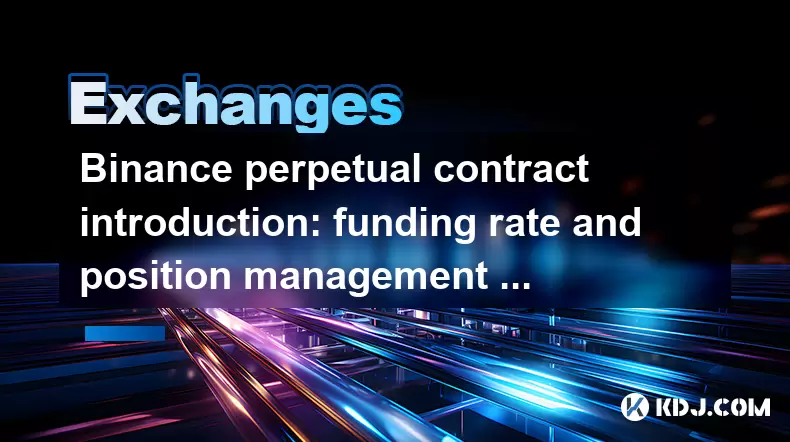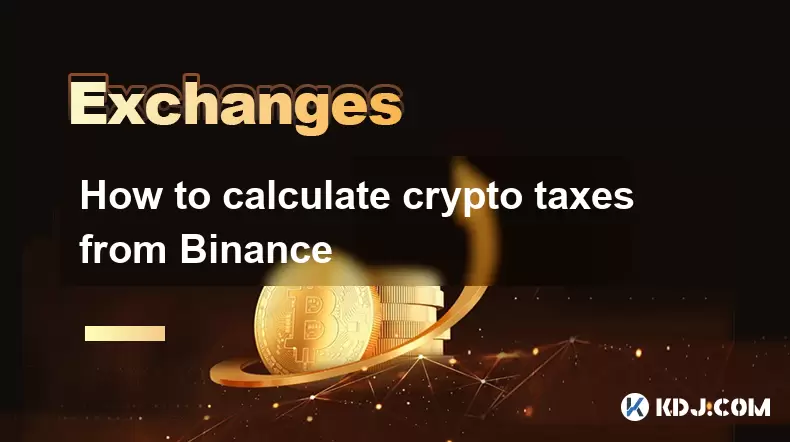-
 Bitcoin
Bitcoin $117500
2.15% -
 Ethereum
Ethereum $3911
6.19% -
 XRP
XRP $3.316
10.79% -
 Tether USDt
Tether USDt $1.000
0.01% -
 BNB
BNB $787.2
2.24% -
 Solana
Solana $175.2
4.15% -
 USDC
USDC $0.9999
0.00% -
 Dogecoin
Dogecoin $0.2225
8.40% -
 TRON
TRON $0.3383
0.28% -
 Cardano
Cardano $0.7868
6.02% -
 Stellar
Stellar $0.4382
9.34% -
 Hyperliquid
Hyperliquid $40.92
7.56% -
 Sui
Sui $3.764
7.63% -
 Chainlink
Chainlink $18.48
10.66% -
 Bitcoin Cash
Bitcoin Cash $582.1
1.88% -
 Hedera
Hedera $0.2601
6.30% -
 Avalanche
Avalanche $23.33
4.94% -
 Ethena USDe
Ethena USDe $1.001
0.02% -
 Litecoin
Litecoin $122.3
2.04% -
 UNUS SED LEO
UNUS SED LEO $8.969
-0.27% -
 Toncoin
Toncoin $3.339
0.86% -
 Shiba Inu
Shiba Inu $0.00001287
4.30% -
 Uniswap
Uniswap $10.43
7.38% -
 Polkadot
Polkadot $3.861
5.08% -
 Dai
Dai $1.000
0.02% -
 Bitget Token
Bitget Token $4.513
3.41% -
 Monero
Monero $267.7
-6.18% -
 Cronos
Cronos $0.1499
4.14% -
 Pepe
Pepe $0.00001110
5.15% -
 Aave
Aave $284.9
8.28%
Binance perpetual contract introduction: funding rate and position management tutorial
Binance perpetual contracts require understanding funding rates and effective position management to align with spot prices and manage risk successfully.
May 31, 2025 at 03:56 am

Binance Perpetual Contract Introduction: Funding Rate and Position Management Tutorial
Perpetual contracts on Binance offer traders the ability to speculate on the price movements of cryptocurrencies without an expiration date, making them a popular choice among crypto traders. Understanding the mechanics of funding rates and mastering position management are crucial for success in trading these instruments. In this article, we will delve into the specifics of funding rates and provide a detailed tutorial on position management for Binance perpetual contracts.
Understanding Funding Rates on Binance Perpetual Contracts
Funding rates are a key feature of perpetual contracts that help align the contract price with the spot market price. These rates are periodically paid between long and short positions to ensure that the contract price does not deviate significantly from the underlying asset's market price. On Binance, funding rates are calculated and settled every eight hours.
To understand how funding rates work, it is essential to know that they can be positive or negative. A positive funding rate means that long position holders pay short position holders, while a negative funding rate indicates that short position holders pay long position holders. The funding rate is calculated as follows:
[ \text{Funding Rate} = \text{Premium Index} + \text{Clamp} (\text{Interest Rate} - \text{Premium Index}, 0.05\%, -0.05\%) ]
The Premium Index is derived from the difference between the perpetual contract price and the spot price, while the Interest Rate reflects the cost of holding the underlying asset. The clamp function ensures that the funding rate does not deviate too far from the interest rate.
How to Monitor Funding Rates on Binance
Monitoring funding rates is crucial for effective trading strategies. Here is how you can check the funding rates on Binance:
- Navigate to the Binance Futures trading page.
- Select the perpetual contract you are interested in.
- Look for the 'Funding Rate' section on the trading interface. This section will display the current funding rate, the next funding time, and the predicted funding rate.
By keeping an eye on these rates, traders can anticipate whether they will be paying or receiving funding and adjust their positions accordingly.
Position Management Strategies for Binance Perpetual Contracts
Effective position management is vital for maximizing profits and minimizing losses in perpetual contract trading. Here are some key strategies to consider:
Opening and Closing Positions
Opening and closing positions on Binance is straightforward but requires attention to detail:
To open a position:
- Navigate to the Binance Futures trading page.
- Select the perpetual contract you want to trade.
- Choose whether you want to go long (buy) or short (sell).
- Enter the amount you wish to trade.
- Review your order details and confirm the trade.
To close a position:
- Go to the 'Positions' tab on the Futures trading page.
- Select the position you want to close.
- Click on 'Close Position' and confirm the order.
Using Stop-Loss and Take-Profit Orders
Stop-loss and take-profit orders are essential tools for managing risk and locking in profits. Here's how to set them up:
To set a stop-loss order:
- Open the 'Positions' tab.
- Select the position for which you want to set a stop-loss.
- Click on 'TP/SL' and enter the stop-loss price.
- Confirm the order.
To set a take-profit order:
- Follow the same steps as setting a stop-loss order but enter the take-profit price instead.
Hedging Strategies
Hedging can be used to mitigate risk. Here's how you can implement a basic hedging strategy:
- Open a long position on a perpetual contract.
- Simultaneously open a short position on the same or a correlated asset.
This strategy can help protect against adverse price movements in the market.
Leverage and Margin Management
Leverage allows traders to amplify their exposure to the market, but it also increases risk. Here's how to manage leverage and margin on Binance:
Adjusting Leverage:
- Go to the trading page for the perpetual contract.
- Click on the 'Leverage' button.
- Select the desired leverage level and confirm.
Managing Margin:
- Monitor your margin level in the 'Positions' tab.
- If necessary, add more margin by transferring funds from your spot wallet to your futures wallet.
Risk Management Techniques
Risk management is crucial for long-term success in trading perpetual contracts. Here are some techniques to consider:
- Position Sizing: Never risk more than a small percentage of your total capital on a single trade.
- Diversification: Spread your investments across different assets to reduce risk.
- Regular Monitoring: Keep a close eye on your positions and be ready to adjust them as market conditions change.
Frequently Asked Questions
Q1: How often are funding rates settled on Binance perpetual contracts?
A1: Funding rates on Binance perpetual contracts are settled every eight hours.
Q2: Can I change the leverage on an open position?
A2: Yes, you can adjust the leverage on an open position by navigating to the trading page, clicking on the 'Leverage' button, and selecting the new leverage level.
Q3: What happens if the funding rate is very high?
A3: A very high funding rate means that long position holders will pay a significant amount to short position holders. Traders need to consider this cost when deciding to hold long positions.
Q4: Is it possible to trade perpetual contracts without paying funding rates?
A4: It is not possible to completely avoid funding rates if you hold a position at the time of funding settlement. However, you can minimize the impact by closing positions before funding settlement or by trading in a way that benefits from the funding rate.
Disclaimer:info@kdj.com
The information provided is not trading advice. kdj.com does not assume any responsibility for any investments made based on the information provided in this article. Cryptocurrencies are highly volatile and it is highly recommended that you invest with caution after thorough research!
If you believe that the content used on this website infringes your copyright, please contact us immediately (info@kdj.com) and we will delete it promptly.
- XRP ETF, Bitcoin ETF, and Japan: A New Era for Crypto Investing?
- 2025-08-08 14:30:12
- Crypto, Congress, and Bills: Navigating the Regulatory Landscape in 2025
- 2025-08-08 14:30:12
- Union Jack Oil, Unused Gas, and Bitcoin: A New York Minute on UK's Crypto-Energy Play
- 2025-08-08 14:50:12
- Bitcoin Price: Bullish Flag Points to $123K Breakout?
- 2025-08-08 14:50:12
- Crypto Group's WNBA Dildo Toss: Meme Coin Mania or Just Plain Dumb?
- 2025-08-08 14:55:13
- Stablecoins, Hong Kong, and On-Chain Finance: Navigating the Regulatory Maze
- 2025-08-08 12:30:12
Related knowledge

How to use margin trading on Poloniex
Aug 08,2025 at 09:50am
Understanding Margin Trading on Poloniex

How to use advanced trading on Gemini
Aug 08,2025 at 04:07am
Understanding Advanced Trading on GeminiAdvanced trading on Gemini refers to a suite of tools and order types designed for experienced traders who wan...

How to deposit USD on Bitstamp
Aug 07,2025 at 05:18pm
Understanding Bitstamp and USD DepositsBitstamp is one of the longest-standing cryptocurrency exchanges in the industry, offering users the ability to...

How to use the Kraken Pro interface
Aug 08,2025 at 09:57am
Understanding the Kraken Pro Interface LayoutThe Kraken Pro interface is designed for both novice and experienced traders seeking a streamlined experi...

How to find my transaction ID on Gemini
Aug 08,2025 at 12:50am
Understanding the Transaction ID in Cryptocurrency ExchangesA transaction ID (TXID) is a unique alphanumeric string that identifies a specific transfe...

How to calculate crypto taxes from Binance
Aug 08,2025 at 07:56am
Understanding Cryptocurrency Taxation on BinanceCalculating crypto taxes from Binance requires a clear understanding of how tax authorities classify d...

How to use margin trading on Poloniex
Aug 08,2025 at 09:50am
Understanding Margin Trading on Poloniex

How to use advanced trading on Gemini
Aug 08,2025 at 04:07am
Understanding Advanced Trading on GeminiAdvanced trading on Gemini refers to a suite of tools and order types designed for experienced traders who wan...

How to deposit USD on Bitstamp
Aug 07,2025 at 05:18pm
Understanding Bitstamp and USD DepositsBitstamp is one of the longest-standing cryptocurrency exchanges in the industry, offering users the ability to...

How to use the Kraken Pro interface
Aug 08,2025 at 09:57am
Understanding the Kraken Pro Interface LayoutThe Kraken Pro interface is designed for both novice and experienced traders seeking a streamlined experi...

How to find my transaction ID on Gemini
Aug 08,2025 at 12:50am
Understanding the Transaction ID in Cryptocurrency ExchangesA transaction ID (TXID) is a unique alphanumeric string that identifies a specific transfe...

How to calculate crypto taxes from Binance
Aug 08,2025 at 07:56am
Understanding Cryptocurrency Taxation on BinanceCalculating crypto taxes from Binance requires a clear understanding of how tax authorities classify d...
See all articles

























































































